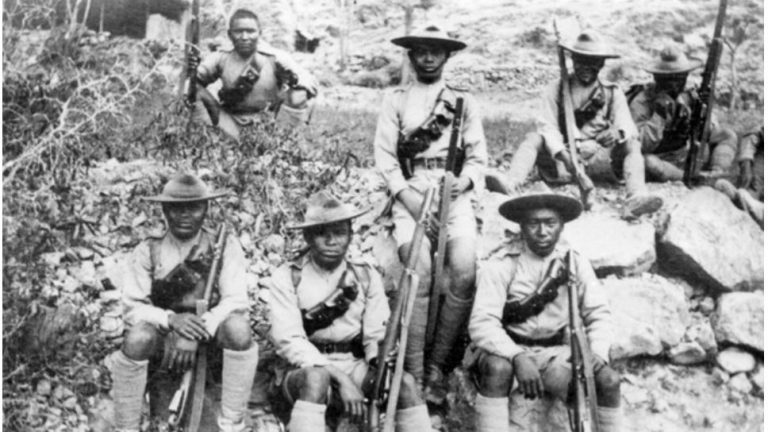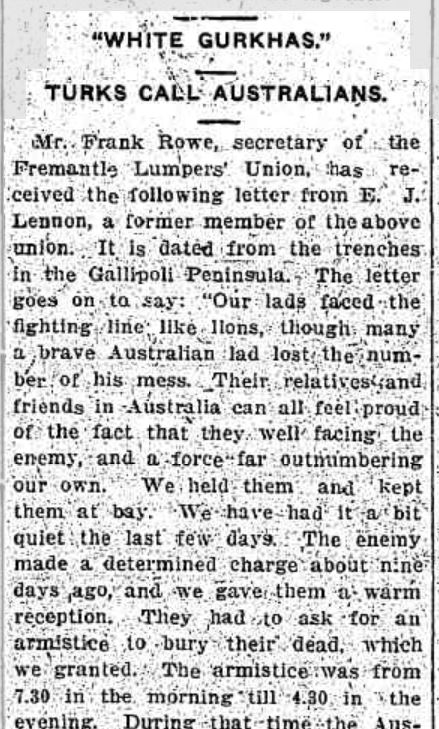
Prativa Shrestha
April 25, 2019
In 1915, the Anzacs fought to capture the Gallipoli Peninsula from the side of British Government. Alongside the Anzacs, were the Indian troops. Even though the number of Anzacs was higher, the Indian troops played important role in the expedition. The larger part of Indian troops included Gurkhas, soldiers from Nepal; however, their contribution is not much talked about.
The 1/6th Gurkha Rifles were awarded the Battle Honours “Helles”, “Suvla”, “Krithia” and “Gallipoli 1915” after the Gallipoli Campaign.
The Daily News from Perth on 13 July 1915 published a letter sent by E.J Lennon to Frank Rowe, secretary of the Fremantle Lumpers’ Union.
The letter was dated from the trenches in the Gallipoli Peninsula. The letter stated, “The Turks were led to believe that we were black and cannibals! They call us the ‘White Gurkhas’.”

According to a book named, ‘Die in Battle, Do not Despair- The Indians on Gallipoli, 1915’ by Peter Stanley, over 16,000 Indian troops served the 8-month long Gallipoli campaign including four battalions of Gurkhas. They worked in an infantry brigade, mountain artillery brigade, medical units and as mule drivers to carry the supplies.

General Sir Ian Hamilton lobbied hard to get Gurkha Brigade included in the force. As an old India hand, he was aware of the Gurkha’s ability to fight in hilly terrain. Hamilton formed the 29th Indian Infantry Brigade which included Sikhs, Punjabis and Gurkhas. He wanted the involvement of the experienced Indian troops to work with inexperienced Anzacs. Indian Army was well-trained while Anzacs were citizen volunteers who were sent to the war for the first time.
Due to the delayed formation, the brigade could not arrive on time. The operation led by Mediterranean Expeditionary Force which included British and ANZAC troops did not take place according to the plan and the campaign was dragged for eight months while trying to capture the capital of Turkey which led to the evacuation of Anzacs in December 1915.
Gurkha Bluff
Despite the late arrival, the Gurkhas’ were able to capture a bluff overlooking the beach which had been converted into a stronghold by the Ottoman forces. The highland secured the British line all the way to the sea. The British troops had failed to do so previously with huge loss of lives.
Following the event, General routine order (16) was published on May 17th, 1915,

After two days, Hamilton withdrew Punjabi Muslims concerning over their loyalty and due to casualties. Stanley states, “Punjabi Muslims were not disloyal; it was a ploy to bring more Gurkhas in”.
Sari Bair
The 6th Gurkhas fought in the battle of Sari Bair during the August offensive alongside a Maori contingent from New Zealand. Almost one in five of the 500 New Zealanders were killed and injured. The surviving Gurkhas seized the Hill Q on Sari Bair ridge which the furthest Allied advance during the August offensive. But they were forced to retreat when they were mistakenly shelled by the Royal Navy.
In the book, ‘Gallipoli: The Fading Vision’ John North has mentioned,
“The lonely advance of these British and Gurkha skirmishers to the crest of the ridge, when the battle was already lost must always remain one of the most gallant episodes in the whole campaign.”

Gen. Hamilton’s dispatch states, “Every British officer in the 1/6th had been killed or wounded, except for the Medical Officer Capt Phipson, and the withdrawal was carried out by Subedar-Major Gambirsing Pun, who spoke no English, and relied on Capt Phipson to interpret for him. The Battalion withdrew in good order and Gambirsing was awarded the MC for his leadership and gallantry”.
Lt Gen Sir Reginald Savory who served at Gallipoli with the 14th KGO Sikhs believed the 1/6th Gurkha Rifles were “the outstanding battalion of the Gallipoli Campaign”.
Similarly, Gen. Hamilton’s secretary acknowledged that, “It is Sir Ian Hamilton’s most cherished conviction that if he had been given more Gurkhas at the Dardanelles he would never had been held up by the Turks”.
Every year on Anzac Day, Gurkhas and their families participate in the Anzac parade and the commemorative service.










